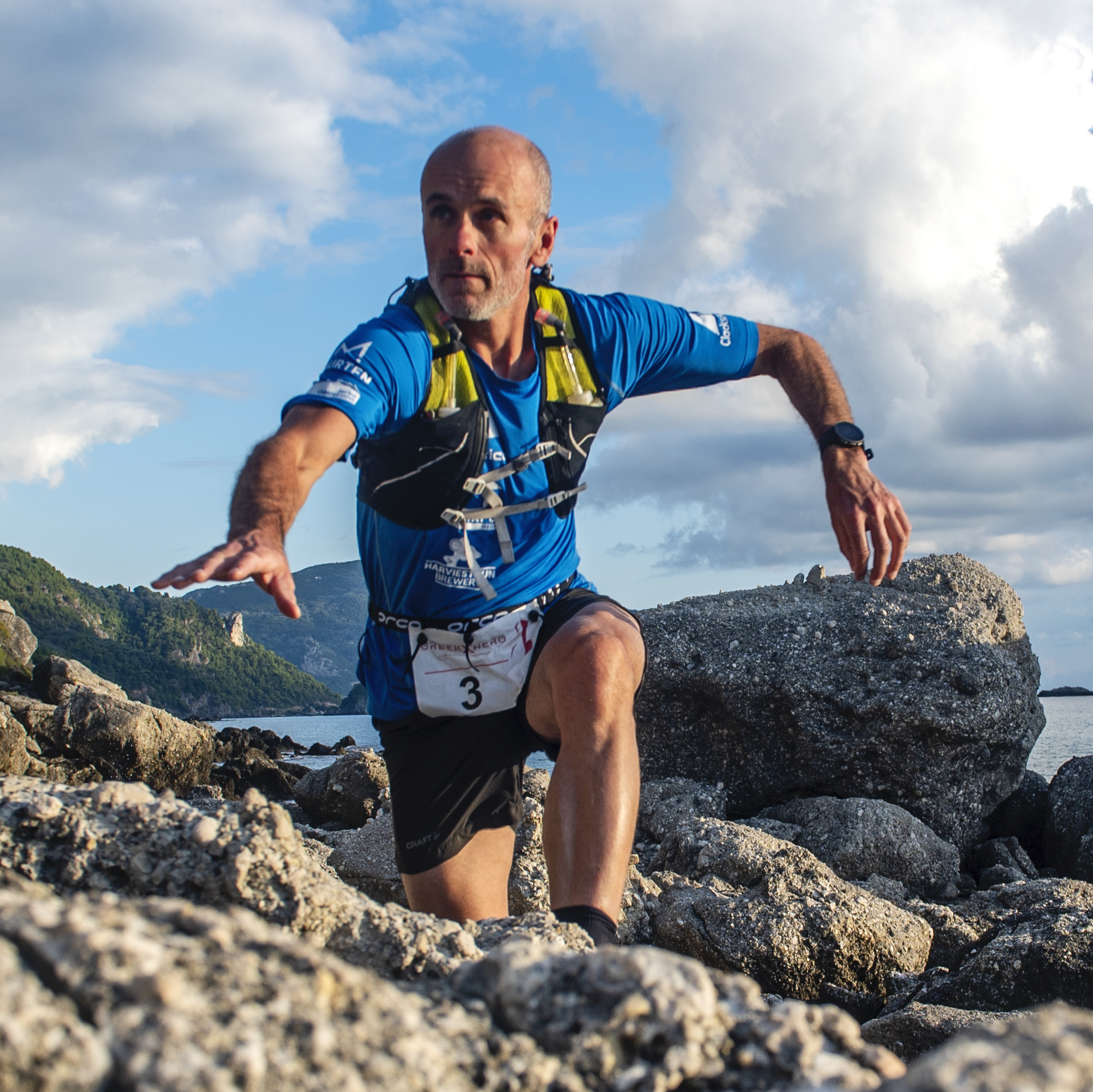This feature was originally published in issue 390 of Cycling Plus magazine. Subscribe now to save more than 60% on the cover price.
The latest issue celebrates 30 years of Cycling Plus, with the team picking their 30 greatest bikes of the last three decades, alongside expert bike and kit tests, inspirational rides and real-life cycling stories.
Tucked away on the north-east coast of Scotland between Inverness and Aberdeen, and just outside the well-trodden North Coast 500 tourism trail, the region of Moray is perhaps less heralded among the thousands who head to the north of the country each year.
For many, however, that’s exactly the reason to visit, to avoid the UK's staycation crowd and explore the unique terrain of this underrated Scottish gem. Specifically, the gravelly delights of the Moray Coast Trail, which we’d come to explore by bike.
To get there, we travelled, along with what seemed like half the planet, up the A9, peeling off northeast towards Elgin when we got to Aviemore, with the majority carrying on northwest to Inverness.
The silence that hit us not long after gave the impression we’d taken a wrong turn, though as we travelled through the famed Speyside whisky region, we realised that many tourists may well have been preoccupied with matters other than driving.
From Elgin, we headed on north towards the coast and reached the starting point for our ride, which was the town of Lossiemouth, often referred to as ‘the jewel of the Moray Firth’, complete with two beautiful sandy beaches.
Collective knowledge
The 50-mile Moray Coast Trail is a smaller part of the larger 100-mile Moray Way, a long-distance path popular with walkers and a shiny object in the new world of gravel riding.
We’d have to leave the latter for a return visit, but for today we were fully focused on the Coast Trail part of the triangle.
Living in central Scotland has a variety of perks, but coastal riding isn’t readily available, so it was going to provide a refreshing change of scenery.
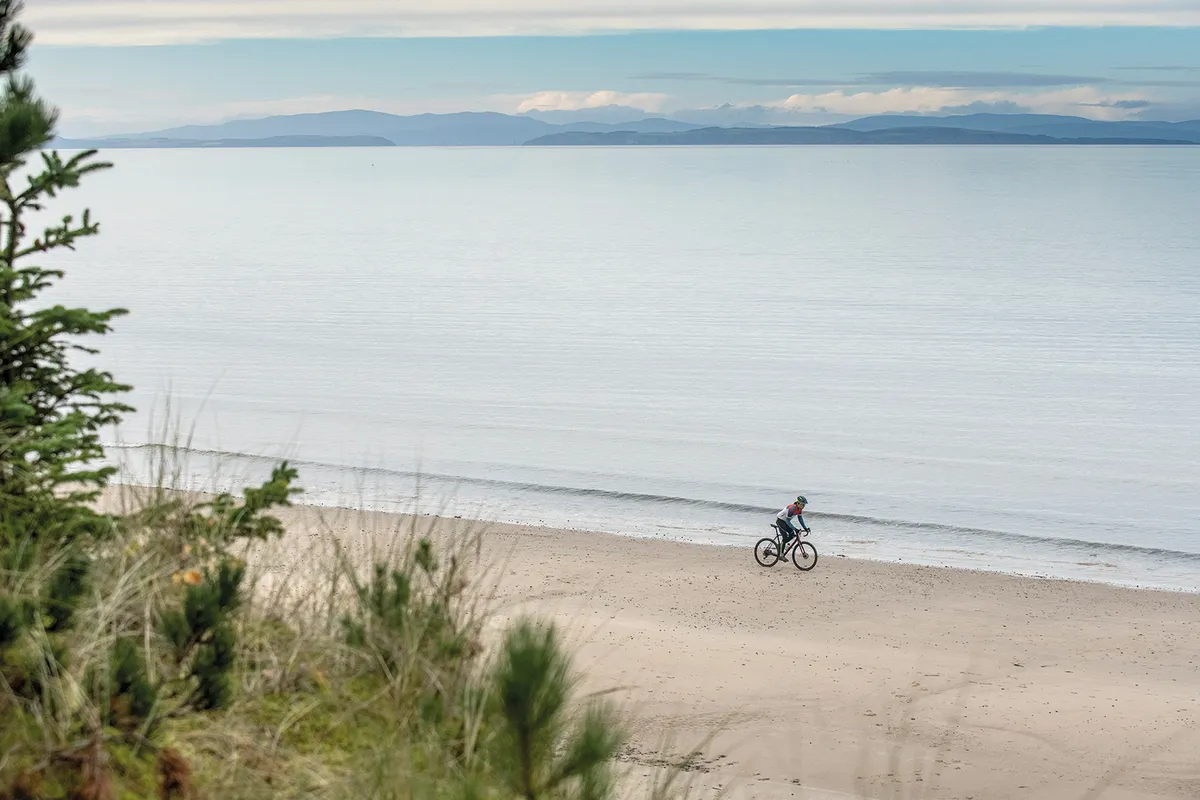
Local knowledge came by way of Mark and Martin from the newly formed Moray Gravel Collective.
Though work got in the way of them joining me and photographer Andy for the ride, they kindly put together a route for us, which included a largely road-based return to base in Lossiemouth.
I had vague memories of visiting this town before and a few texts to friends confirmed that we’d been here more than 20 years ago on a surfing trip. Just like my surfing skills, that visit hadn’t been memorable, but the town has aged well and looked to be thriving.
The seagulls seemed particularly excited by our arrival, which again reminded me of summer holidays gone by. But this was northern Scotland in mid-November.
Our route would cover a good portion of the Coast Trail. We’d head east out of Lossiemouth and turn around at Cullen, but the full 50-mile trail actually starts west of Lossiemouth in Forres.
Our start out of town was aided by a pleasant breeze at our backs, which took us immediately into forest.
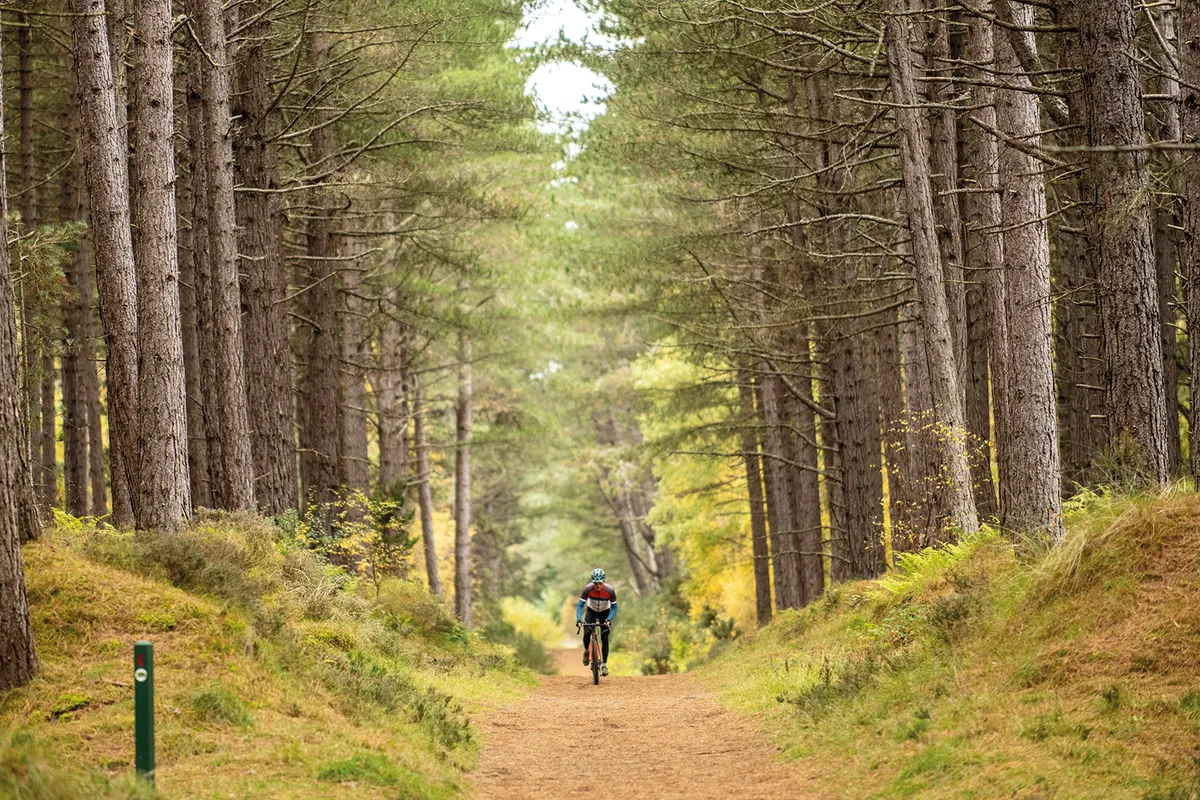
The soil was sandy but firm, with a most agreeable top dressing of old pine needles, a wonderfully smooth off-road surface, free of the mud I’d come to expect on gravel rides at home.
This is the Collective’s local stomping ground for short, local rides from home, with numerous singletrack options springing off the trail that looked tempting but would no doubt get me quickly lost.
We soon moved onto tarmac cycle track, and wooden sleepers rattled as I passed over the splendid Spey Viaduct, completed in 1886 and built as part of the long-defunct Moray Coast Railway.
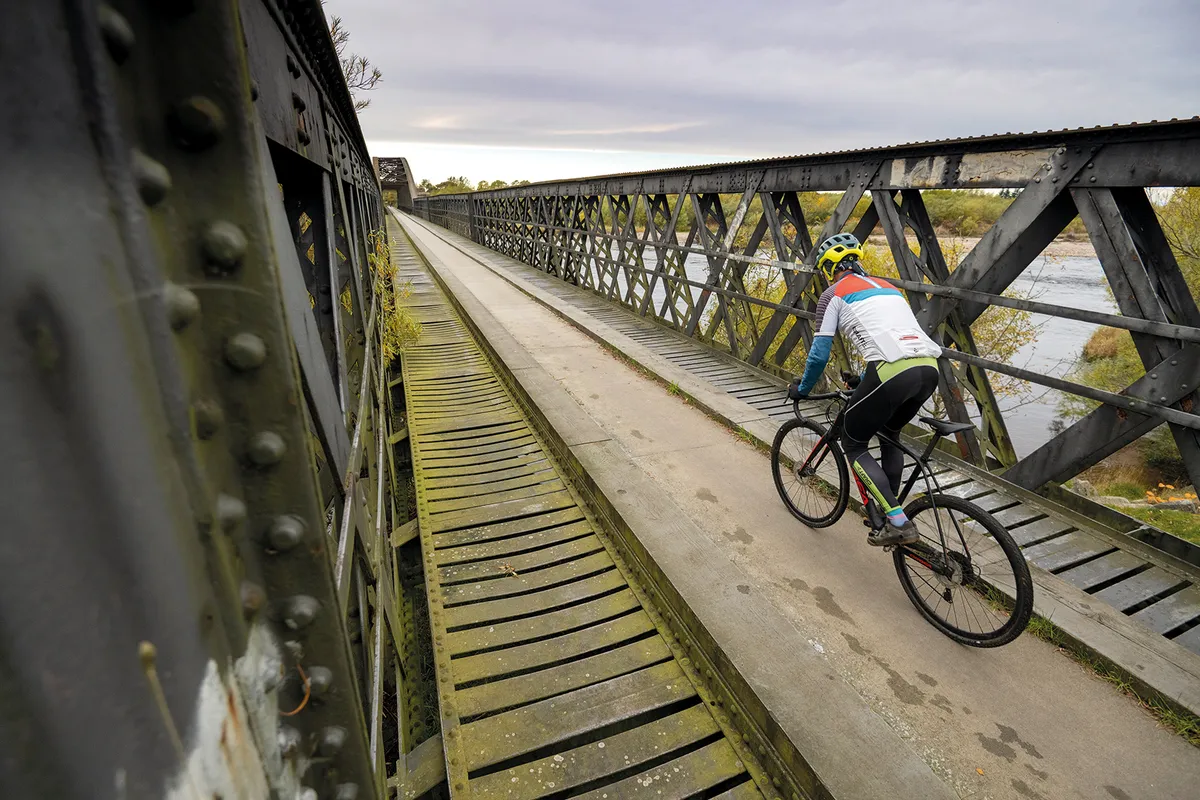
The railway industry’s loss is the bike rider’s gain, as these old lines are now the scene of traffic-free riding all over the country.
On we went to Spey Bay, where river meets sea and good vibes are abundant. The third longest river in Scotland has a special place in Scottish culture, for its salmon and whisky heritage. It’s incredible to think how many salmon swim through the tiny river mouth each year.
Our eastward progress continued with some delightful sandy, pine-needle covered singletrack. The Collective guys had told me this was their favourite section and it was easy to see why.
Sweeping and flowing, this narrow stretch requires your full attention, but that just adds to the enjoyment.
I had expressed concern that the trails in this flat coastal area of Scotland must surely suffer from the effect of trees being damaged in storms, but Martin said the locals don’t only cut down and clear any trees blocking the way, but they even use the trunks to mark the track.
It’s an impressive thing to hear of people encouraging rather than impeding cycling, and far from the case everywhere in the UK.
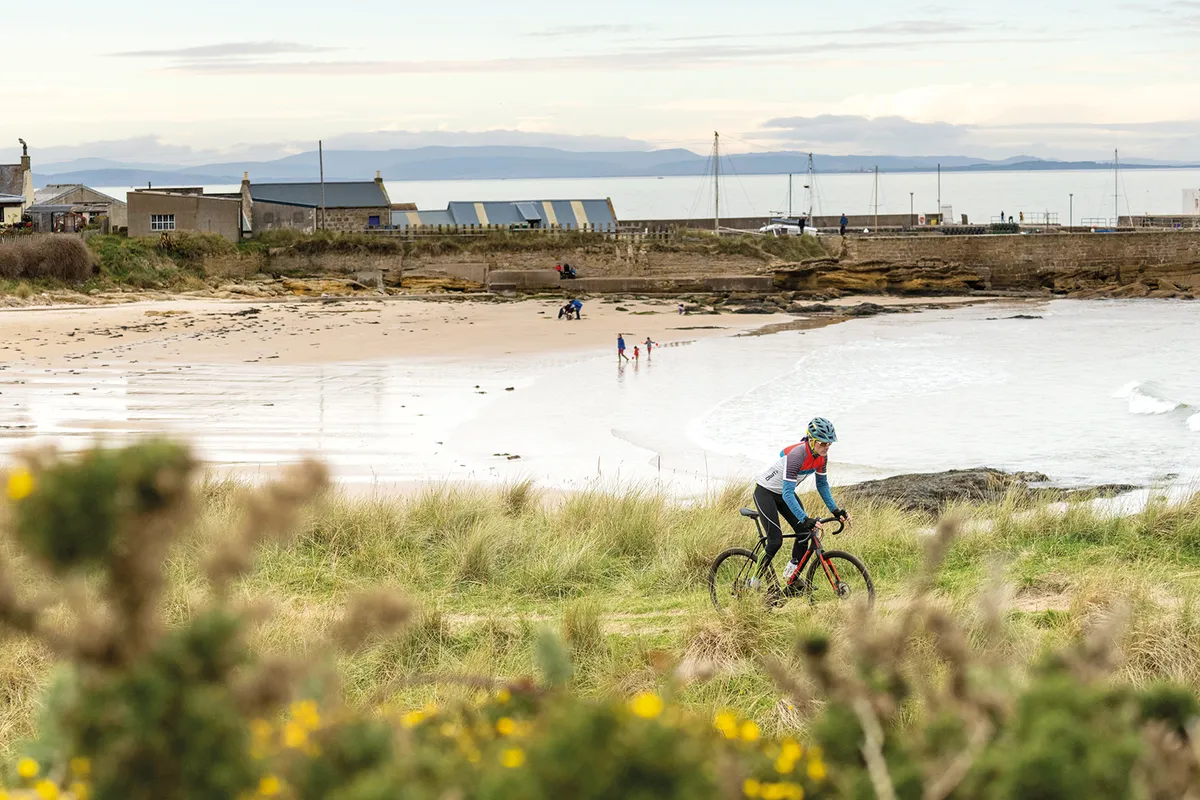
We soon made it onto a coastal road, where we sped through a series of fishing towns. The biggest is Buckie, home to some seriously large trawlers and the requisite whiff of their catches.
The other towns, such as Portgordon, are smaller, with quainter, quieter harbours. Look out for seals and dolphins in the Firth!
Stony silence
We were now as close to the water’s edge as we had been so far. Up ahead, the trail turned into a stony and tussocky mix, with the odd rock pool thrown in to complicate matters, which caused a few winces between Andy and I. From the outset, this had been my one concern about the ride.
I’ve ridden plenty of coastal trails and, while they give great vantage points to look around, they don’t always provide rideable underfoot conditions. Mark and Martin had reassured me, though, saying this part was not to be missed.
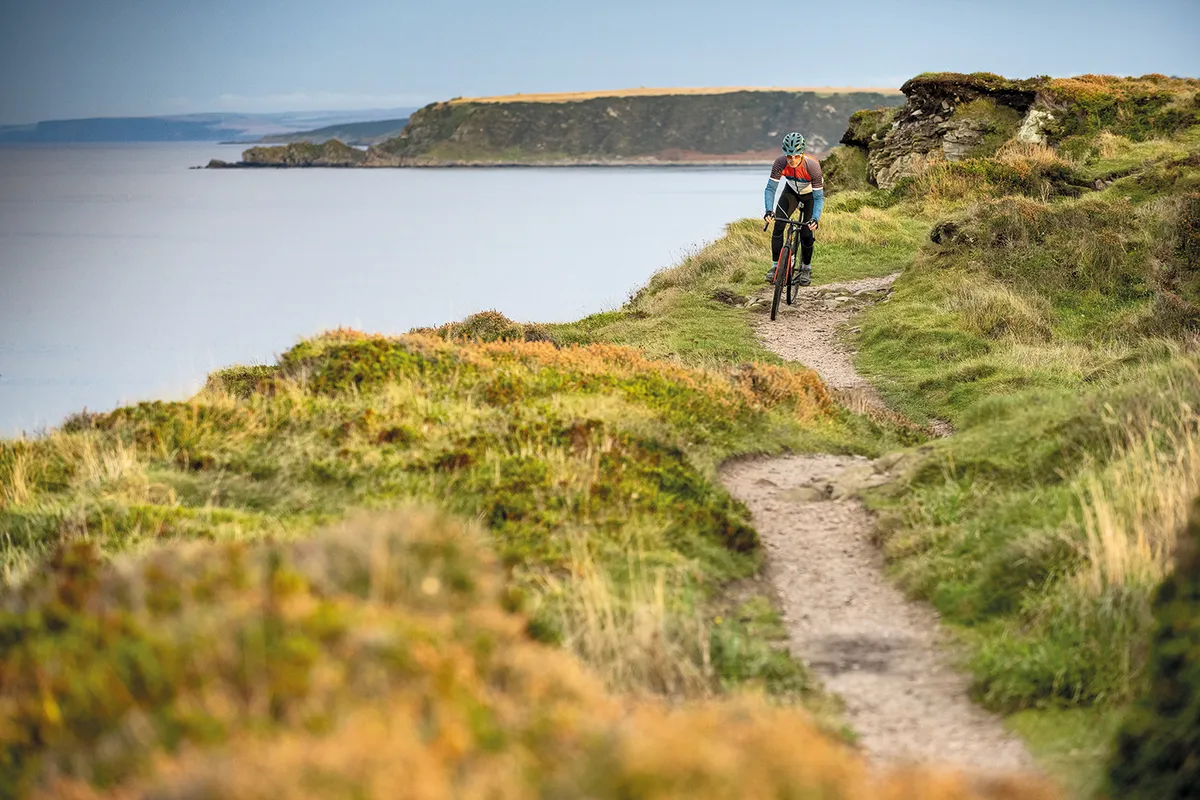
However, I was soon off the bike, pushing, and questioning their advice. We climbed some steps then walked some more, but soon enough we were back on our bikes and wondering what all our fuss had been about.
It had been a few hundred metres of scenic hike-a-bike, which is more than tolerable when the rest of the riding was as lovely as what came next: fast-flowing singletrack winding its way beautifully through gorse high above the sea.
Bow Fiddle Rock, a natural sea arch, is a familiar name and I once (incorrectly and to my cost) referred to it as being in the neighbouring county of Aberdeenshire.
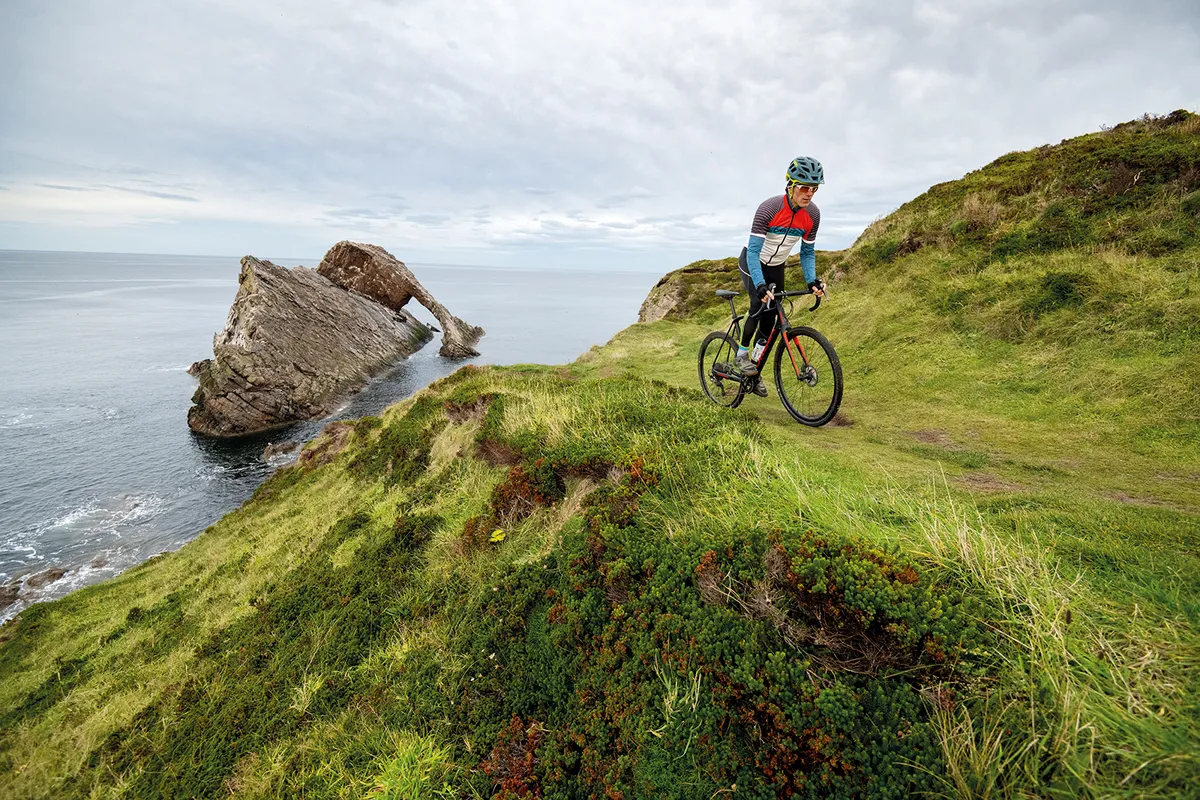
The locals are very proud, and so they should be, of this peculiarly shaped lump of rock just out at sea. It looks like something from Star Trek has landed.
Cooking up a skink
We pressed on and the magnificent coastal singletrack continued – a real test of gravel skills, now with added speed ratcheting up the difficulty. However, after only a few short sections, we found ourselves having to climb off our bikes again.
Not for long though, and the added velocity we’d recently experienced meant we soon arrived at our turn-around point of Cullen, famous for its Cullen skink – a fabulous fish soup and one of Scotland’s best-known dishes – made of smoked haddock, potatoes, milk and onions. It was almost a given that we’d be having it for lunch.
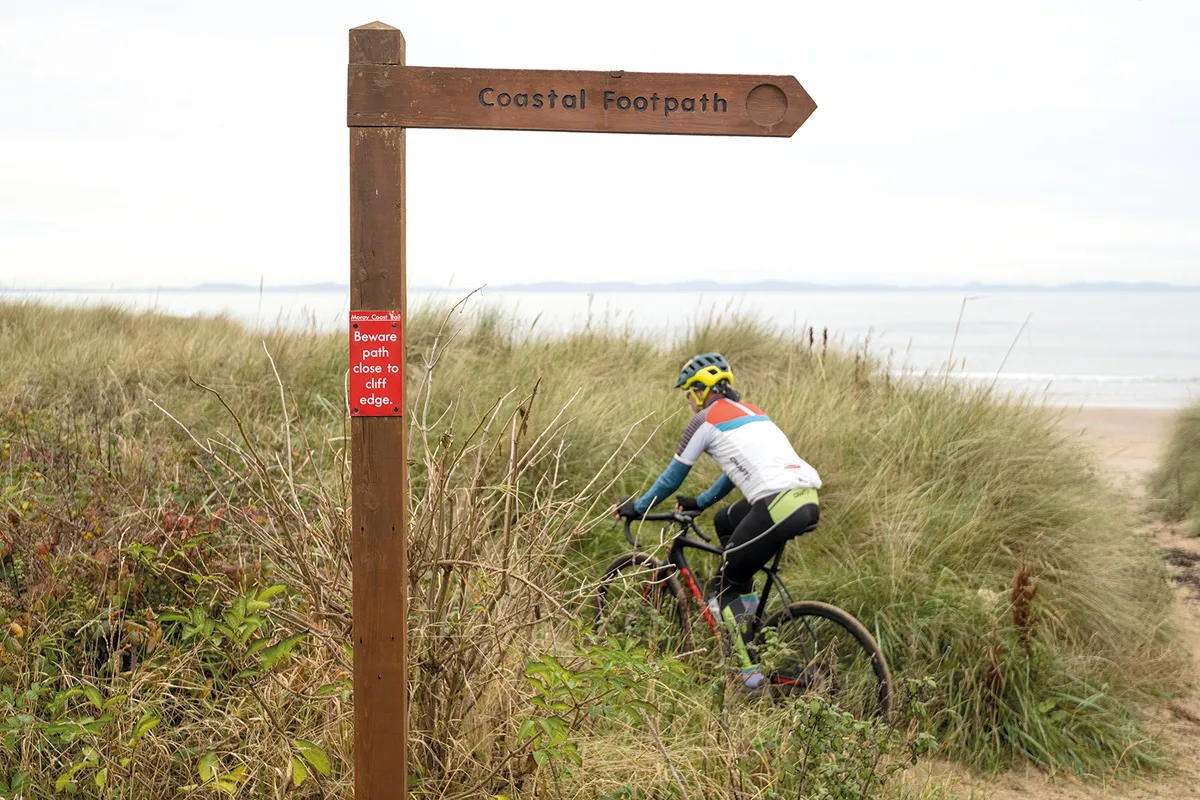
It’s tempting to say we’d reached the end of the road in Cullen. While it was the end of the coast trail for us, we were about to get onto the road for our return journey to Lossiemouth.
We were keen to do something a little bit different for the return; as fabulous as the outward journey had been, there’s something plainly wrong in just turning round and retracing your tyre tracks.
To my mind, it’s the antithesis of the spirit of adventure in riding a bike and gives the feeling of not having completed a full journey. We’d have more tarmac on the return, but at least it’d be of a back-road nature.

Climbing up from Cullen harbour, we connected to National Cycle Network 1, which would be our home for much of the route back.
The gravel eventually gave way to tarmac, but there was still the odd section of rough stuff to contend with to keep things interesting, as well as another magnificent viaduct.
Martin and Mark had been quick to point out the very different feel to the return leg. Although the route was quicker and far less technical, we welcomed our rapid progress now that a headwind was picking up.
The guys had told me they often jumped into Lossiemouth Forest half-way back for a spot of singletrack, but neither the Strava heatmap nor my brain were confident of following anything other than the agreed route, so we stuck to the minor farming roads instead.
On the broken tarmac, the gravel bike still felt like the best tool. Straight backroads in a grid-like formation were very much of the order of the day here.
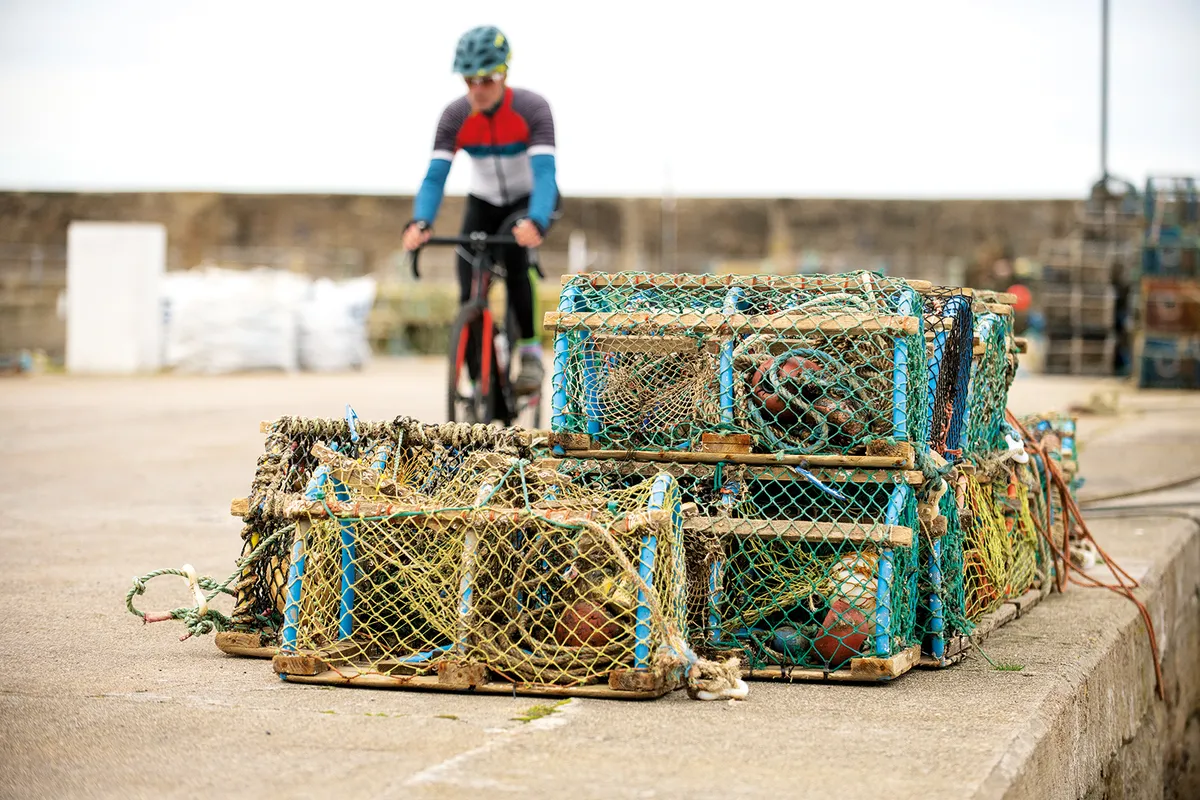
Inclines were gentle undulation rather than anything too testing, and Andy and I struggled to think of a flatter area in the whole of Scotland.
With 50 miles, half of which was off-road, we were more than happy with the lack of vertical. The NCN1 headed straight into Elgin, but for us it was a sharp turn north before we got there, to follow the course of another defunct railway route, this time the old Elgin to Lossiemouth line.
Insider cycling knowledge wasn’t the only thing we’d picked up from the chat with Martin and Mark.
Apparently a favourite ride end-point for the Gravel Collective is the welcoming local brewery, with its café, bar and pizza oven.

Windswept Brewing Co teams up with the riders for some events, and I felt it only right to give the place my business.
Now I’ve had a taste of Scottish coastal riding, I’m keen to come back and do the part we didn’t have time for.
The Moray Coast Trail continues west to Forres and our trusted source tells us it’s every bit as good as the section we’ve done…
Local knowledge
Distance: 56 miles / 90km Total Elevation: 1,500ft / 457m Grade: Moderate – a decent distance with very varied terrain but no significant climbs. Factor in the wind, because what’s easy in one direction will likely be harder in the other. Route: Download the full route on Komoot
Getting there: From Aviemore, take the A95 northeast. Or go up the east coast on the A90, round the Aberdeen bypass and onto the A96. From Inverness, a train line runs through to Forres and Elgin.
Where to stay: Consider the Royal Oak Hotel in Cullen, starting at £40 per person for bed and breakfast.
Where to eat: There are some lovely small shacks on the route, but it's a seasonal part of Scotland so bear that in mind if you go off-peak, when options are more limited. Special mention to the Windswept Brewery in Lossiemouth, and its pizza oven.
More to explore: If the Moray Coast Trail has tempted you, consider the Moray Way, with 100 miles of adventure awaiting you. More information can be found here.
Find, plan and share adventures with Komoot: Komoot is an app that lets you find, plan, and share adventures with the easy route planner. Driven by a desire to explore, and powered by the outdoor community’s recommendations, it’s Komoot’s mission to inspire great adventures, making them accessible to all.

